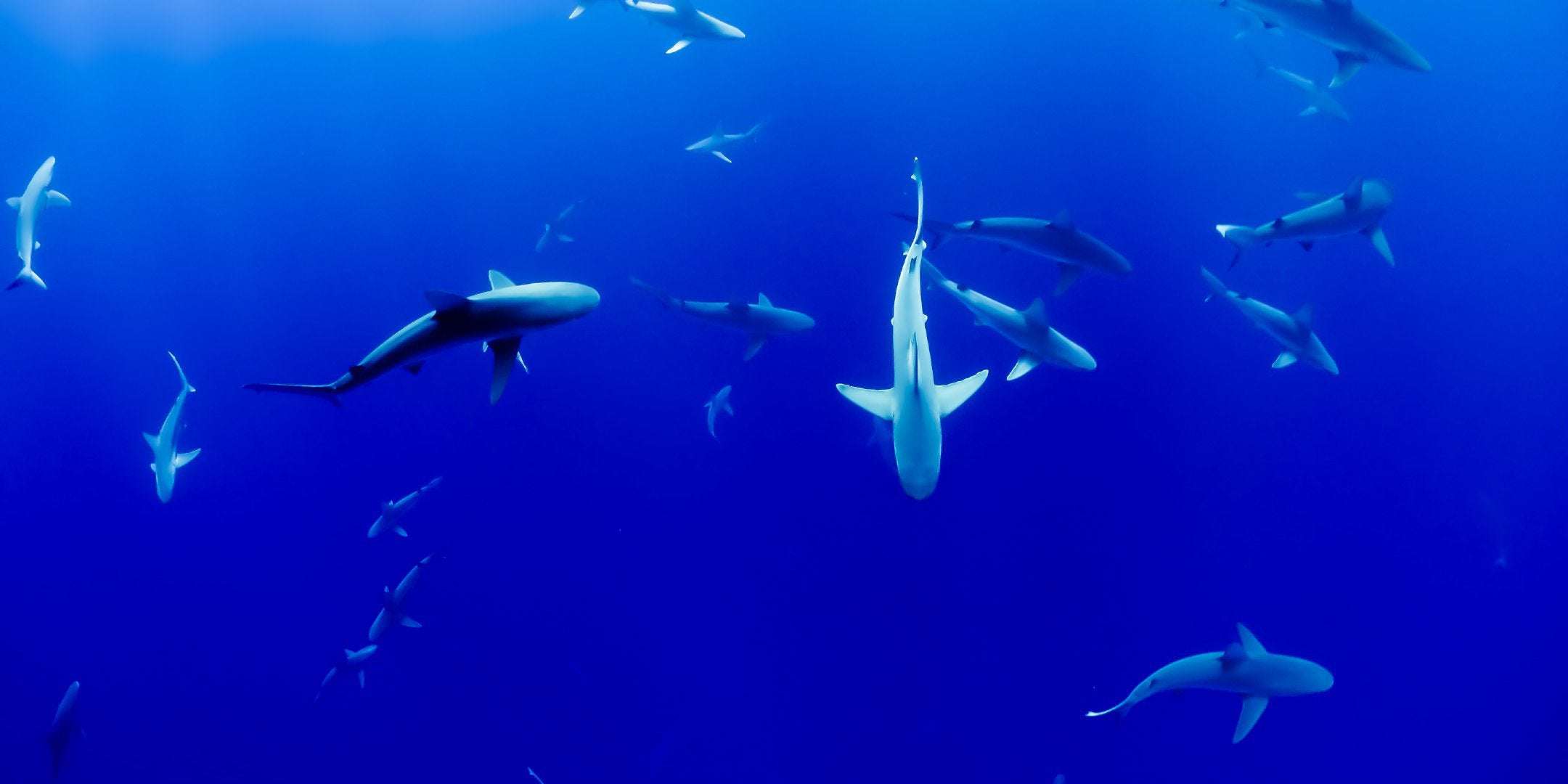Don't let Jaws ruin your perception of sharks!
Through their evolution, sharks have shaped our oceans into the rich habitats we know today. As apex predators (animals that are at the top of the food chain), sharks play an important role in the ecosystem by maintaining the species below them in the food chain – helping remove the weak and sick, helping keep the ocean and fish populations healthy.
Discover our favourite facts about sharks below!
1. Sharks are older than trees
Sharks have existed for more than 450 million years, whereas the earliest tree, lived around 350 million years ago. Not only are sharks older than trees, but they are also one of the only animals to have survived four of the five mass extinctions – now that’s impressive.
2. Megalodon were the largest sharks that ever lived
Dating back 20 million years ago, the megalodon (meaning large tooth) dominated the oceans and were a close relative of today’s great white shark. Based on fossil evidence, they grew between a whopping 15 to 18 metres, liking weighing more than 25 tonnes – making the great white seem tiny in comparison (6 metres in length and 2.2 tonnes)!
3. Some sharks glow in the dark
In 2014 scientists discovered that the elusive chain catshark and swell shark communicate with each other by releasing glowing light from their skin in patterns that are unique to each species and even sex. Invisible to the naked eye, the fluorescent green spots are only visible when a blue filter light is shined on them.
In 2019 a team of researchers discovered how these sharks create their glowing effects: ‘molecules inside their scales transform how shark skin interacts with light, bringing in blue photons, and sending out green.’
Even though sharks have great vision, scientists believe that sharks are most likely colour-blind. If you want to find out the science behind this, The Conversation’s article is a great place to start.
5. Sharks have their own personalities
In 2016 researchers at Macquarie University discovered that Port Jackson sharks have their own individual personalities, just like us. The study showed that each shark has their own way of responding to stress and unfamiliar environments, with some more bold than others.
6. Sharks continually shed and replace their teeth
It’s a good thing the tooth fairy doesn’t have to dive underwater for sharks, as some species lose up to 35,000 teeth in their lifetime!
7. Over 400 species exist worldwide
Just like us, sharks come in all different shapes and sizes! On one end you have the whale shark which can be up to 12 metres in length, and on the other you have the dwarf lantern shark which can fit in your hand. Around 180 species inhabit Australian seas.
A megalodon tooth next to a tooth of a great white shark. Image courtesy Natural History Museum, London, 2018
8. Sharks are important to reef conservation
Research from 2017 revealed that sharks play a key role in regulating the health of coral reefs. During a four-month expedition from Cairns to Broome, a team of scientists from the University of Western Australia found where they were healthier reefs, there were also a high number of sharks present. As sharks control the mid-sized predators, it allows small reef fish to thrive and take care of the actual corals.
9. Sharks affected by full moon
Researchers found in a study of 40 grey reef sharks that their diving behaviour is influenced by the moon, water temperature and time of day. It seems that sharks descended to greater depths and used a wider range of depths, around the time of the full moon.
10. Hammerhead sharks have binocular vision
At last their weird and wacky head makes sense – it gives them better vision! The T-shaped hammerhead allows the sharks to see 360 degrees, having ‘outstanding forward stereo vision and depth perception.’
Brian Clark Howard, These sharks glow underwater – thanks to tiny ‘lightsabers’, National Geographic, 8 August 2019.
Bridie Smith, Sharks have personalities – just like us, The Sydney Morning Herald, 26 May 2016.
David Weber, Coral reefs healthier if more sharks present, new research finds, ABC News, 24 July 2017.
Hammerhead sharks see 360 degrees in stereo, Live Science, 27 November 2009.
JoAnna Klein, How sharks glow to each other deep in the ocean, The New York Times, 8 August 2019.
Josh Davis, Megalodon: The truth about the largest shark that ever lived, Natural History Museum, 6 August 2018.
Maria Rachal, Sharks important to reef conservation, study finds, Australian Geographic, 24 July 2017.
Respect: Sharks are older than trees, Smithsonian Magazine, 27 June 2012.
Shark behaviour affected by full moon, Australian Geographic, 16 April 2013.
Ultimate guide to Australian sharks, Australian Geographic, 10 July 2013.

_scorp_ on November 28th, 2020 at 21:51 UTC »
Sharks are older than Saturn's rings.
Get your head around that sharks looked up. Saw Saturn. No rings....
Snippy_Snallygaster on November 28th, 2020 at 21:32 UTC »
Before plants, Earth had giant 30ft tall fungal spikes sticking out of it instead.
Go far enough back, and you would stuggle to know what planet you were on.
....i guess until you see a shark, anyway.
Edit: ft, not m.
Rounin92 on November 28th, 2020 at 20:42 UTC »
Always so weird to think about the earth before it was literally an alien planet. I cant imagine an earth with no trees. And wasnt there nothing to decompose the wood for like millions of years after they came around?